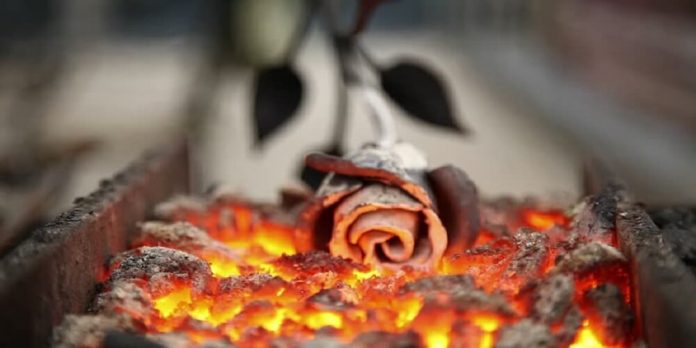Steel forging is a metalworking process that makes use of hammers to distort the shape of steel before it is heated. Steel forging dates back to the 1800s where forge smiths used this method to create tools. This process creates some properties in forged steel that differentiates it from other metals.
Heating steel to forging temperatures makes it more ductile and malleable. When force and pressure are applied, the steel can be molded and shaped to desire. With adequate procedures, a billet of steel can be permanently shaped without cracking due to its plasticity. For steel forging to properly take place, an induction system, a forge oven, or forge furnace is required to heat the steel to an adequate temperature.
The plastic deformation process and thermal cycle to metallurgical recrystallization and grain refinement. This in turn strengthens the forged steel, especially in toughness and impact. In this article, we will be reviewing the categories and properties of forged steel.
Categories of steel forging
There are three categories of steel forging and they are classified according to their forming temperature of the forged steel.
1. Hot steel forging
For hot steel forging, the temperature is usually between 950°C to 1250°C (1742°F to 2282°F). This is above its recrystallization temperature. Hot forging does not require high force to shape and it has good formability. Hot forged steel is strong ductility and strength.
2. Warm steel forging
It is also referred to as hardened steel forging. Its forging temperature is between 750°C to 950°C (1382°F to 1742°F). This forging temperature restricts its ductility and also needs high forming forces, unlike hot forging. One of the primary benefits of warm forging is its versatility. This is because warm forging is between hot and cold forging.
3. Cold steel forging
Cold steel forging is done at ambient or room temperature up to about 150°C (302°F). Cold steel forging needs high forming forces. It also leads to low formability. Cold forging results in a better surface finish than the other methods of steel forging. It also conserves material better hence it is more cost-effective.
Properties of Forged steel
1. Strength and durability
Forged steel has great strength and ate very tough. It is less likely to be distorted or shatter if it collides with other materials. The strength and toughness of forged steel are from its forging process of pressing and hammering. The process stretches the grain of the steel and aligns it in one direction. Forged steel is known to stand the test of time due to its optimal durability.
2. Size limit
The forging process makes it difficult to shape the steel hence, the steel is shaped while it is still solid unlike casting that is done when the metal is in its liquid state.
3. Anisotropy
Forged steel is anisotropic. This means that its forging strength is not a hundred percent consistent all through the steel forge. Rather, the strength of the steel is more in the direction of the grain flow resulting from its fabrication process.
4. Consistency
The same consistency can be maintained throughout the forged steel. This is because the steel forging process is very meticulous and accurately measured.
Conclusion
Steel forging is one of the best ways to forge metals. Although it has been in the industry for a long time, it remains trusted.







